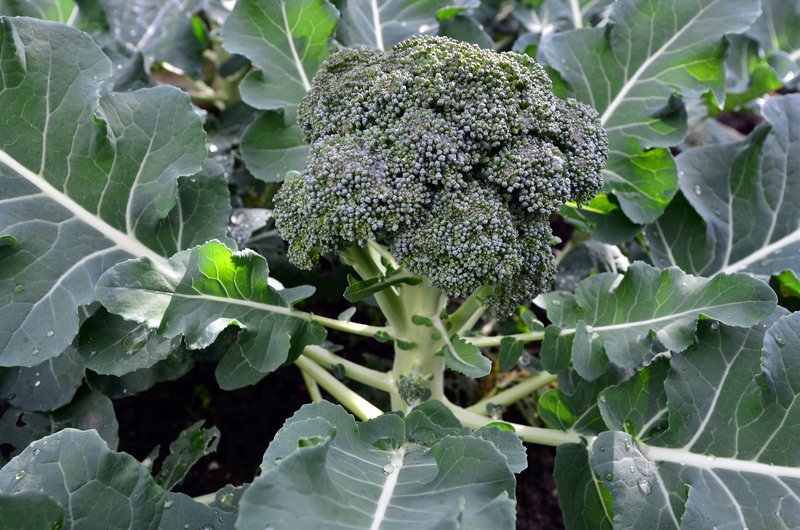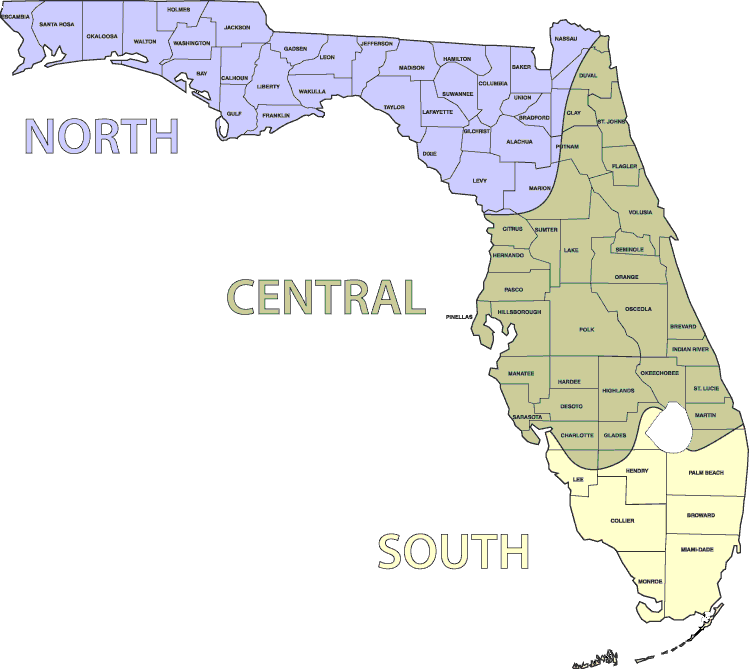Broccoli Varieties for Florida
Broccoli, with its robust, green heads and sturdy stems, adds a touch of lush greenery to any garden. This cool-season vegetable is known for its dense, tree-like crowns that stand out against the leafy backdrop. Its compact yet striking appearance makes broccoli a standout feature in garden beds or vegetable plots.
In Florida planting zone 9, broccoli thrives, especially during the cooler months. The plant's heads form into tight clusters of flower buds, ready to be harvested when they reach their peak. Seeing these beautiful green heads emerge is a rewarding sight, signaling that your garden is producing healthy and nutritious vegetables.
For those new to gardening, broccoli is a fantastic choice. It’s not only visually appealing but also highly nutritious, packed with vitamins and minerals. Whether you prefer it steamed, roasted, or raw, broccoli brings a fresh and healthy addition to your meals, making your gardening efforts both enjoyable and beneficial.
I would give broccoli a 3 out of 5 on how easy it is to grow. Broccoli requires a bit more attention, especially regarding timing for cooler weather. However, it's still manageable for beginners with some planning.
Green Magic
Hybrid

Description: Green Magic is a heat-tolerant broccoli variety known for its smooth, uniform heads and excellent flavor. It has a compact growth habit and is resistant to many common diseases.
Growing Season: Fall and Winter
USDA Planting Zone: 9-11
Special Notes: Performs well in warmer climates and has good side shoot production after the main head is harvested.
Sun King
Hybrid

Description: Sun King is another heat-tolerant variety that produces large, firm heads with a deep green color. It is known for its adaptability to different growing conditions.
Growing Season: Fall and Winter
USDA Planting Zone: 9-11
Special Notes: Resistant to downy mildew and offers a high yield. It's suitable for planting in regions with warmer winters.
De Cicco
Heirloom

Description: De Cicco is an heirloom variety that produces smaller heads but has a long harvest period. It is known for its sweet flavor and tender texture.
Growing Season: Fall and Winter
USDA Planting Zone: 3-10
Special Notes: Excellent for continuous harvesting as it produces numerous side shoots after the main head is cut. Suitable for both cool and warm climates.
Calabrese
Heirloom

Description: Calabrese is a popular variety with medium-sized heads and a rich, robust flavor. It is an heirloom variety that dates back to the 19th century.
Growing Season: Fall and Winter
USDA Planting Zone: 3-10
Special Notes: Produces side shoots that can be harvested after the main head. Known for its adaptability to various growing conditions.
Florida Vegetable Planting Guide
This guide provides information on when to start seeds inside, direct seed, and transplant starter plants in the different regions of Florida.
North USDA Planting Zones: 8b-9a
Central USDA Planting Zones: 9b & some of 10a
South USDA Planting Zones: 10a-11b
Visit the U.S. National Arboretum for an Exact USDA Planting Zone Map.

| Broccoli | North Florida | Central Florida | South Florida |
|---|---|---|---|
| Start Seeds Inside | Jul-Dec | Aug-Dec | Sep-Jan |
| Direct Seed | Aug-Feb | Sep-Feb | Oct-Jan |
| Transplant Starter Plants | Aug-Mar | Oct-Mar | Oct-Feb |
Explanation:
Start Seeds Inside: Starting broccoli seeds indoors in late summer allows for controlled conditions, ensuring strong seedlings ready for transplanting outdoors in the fall.
Direct Seed: Direct seeding broccoli during the cooler months allows for rapid germination and establishment, avoiding the stress of high temperatures.
Transplant Starter Plants: Transplanting broccoli starter plants in the cooler months helps them establish quickly and take advantage of the full growing season, leading to healthier and more productive plants.
________________________________________________________________________________________________________________________
Soil: Broccoli prefers well-drained, fertile soil with a pH between 6.0 and 7.0. Amend the soil with compost or well-rotted manure to improve fertility.
Sun: Full sun is ideal, but broccoli can tolerate partial shade, especially in hotter climates.
Watering: Keep the soil consistently moist but not waterlogged. Mulching helps retain soil moisture and regulate temperature.
Spacing: Plant seedlings 18-24 inches apart in rows spaced 10-15 inches apart to allow adequate air circulation and room for growth.
Fertilization:
N-P-K Ratio: Broccoli benefits from a balanced fertilizer with a higher nitrogen content to support leafy growth, such as 10-10-10 or 14-14-14.When to Add:
Before Planting: Apply the balanced fertilizer to the soil before planting seeds or transplants to promote strong initial growth.
Mid-Growing Season: Reapply the fertilizer about four weeks after planting and then again when the heads start to form to support continued growth and head development.
Application Tips:
Follow the directions on the fertilizer package to avoid over-fertilization.
Apply the fertilizer evenly around the base of the plants and water thoroughly to help the nutrients reach the roots.
Additional Tips:
Broccoli grows best in well-drained soil rich in organic matter, so consider adding compost to improve soil fertility and structure.
Mulch around the plants to help retain moisture, suppress weeds, and regulate soil temperature.
Ensure that broccoli receives consistent moisture, especially during head formation, to prevent stress and promote even growth.
Blog post on Natural Fertilizers
Harvest: Broccoli is ready to harvest when the head is fully developed, firm, and tightly packed, typically 60-100 days after planting. Cut the main stem about 5-6 inches below the head before the flower buds begin to open.
By selecting the right broccoli varieties and following these growing tips, you can achieve a successful and bountiful broccoli harvest in your Florida garden.
Pests and Diseases that affect Broccoli in Florida:
Aphids: Small insects that suck sap from the leaves and stems, causing curling and yellowing.
Cabbage Worms: Caterpillars that chew large holes in the leaves.
Flea Beetles: Small beetles that chew small holes in the leaves.
Cutworms: Caterpillars that cut down young plants at the base.
Natural Pest Control
Downy Mildew: A fungal disease that causes yellowing leaves with a fuzzy, grayish growth on the underside.
Clubroot: A fungal disease that causes swollen and distorted roots, leading to stunted growth.
Companion Plants:
Onions
Description: Onions are bulbous vegetables with a pungent taste and strong aroma.
Growing Season: Fall to spring
USDA Planting Zone: 3-9
Special Notes: Onions prefer full sun and well-drained soil.
How it Helps: Onions help repel aphids, flea beetles, and other pests that can damage broccoli. Their strong odor masks the scent of broccoli, making it harder for pests to locate them.
Marigold
Description: Marigolds are bright, sunny flowers that come in a variety of colors including yellow, orange, and red.
Growing Season: Spring through fall
USDA Planting Zone: 2-11
Special Notes: Marigolds release chemicals in the soil that deter nematodes and other soil-borne pests.
How it Helps: Marigolds help repel aphids, flea beetles, and other pests. Their roots secrete a substance that helps prevent nematodes, protecting broccoli’s root system.
Dill
Description: Dill is an herb with feathery green leaves and yellow flowers, known for its use in pickling.
Growing Season: Spring to early summer
USDA Planting Zone: 2-11
Special Notes: Dill prefers full sun and well-drained soil.
How it Helps: Dill attracts beneficial insects such as ladybugs and predatory wasps that prey on aphids, cabbage worms, and flea beetles. It also helps improve the health of surrounding plants by enhancing their growth.
Chamomile
Description: Chamomile is a daisy-like herb known for its small, white flowers and calming properties.
Growing Season: Spring to summer
USDA Planting Zone: 3-9
Special Notes: Prefers full sun to partial shade and well-drained soil.
How it Helps: Chamomile attracts beneficial insects like hoverflies and parasitic wasps that prey on aphids and other pests. It also has antifungal properties that can help protect broccoli from diseases.
Mint
Description: Mint is a fragrant herb with a refreshing, cooling flavor, known for its vigorous growth.
Growing Season: Spring to fall
USDA Planting Zone: 3-11
Special Notes: Mint can be invasive, so it’s best planted in containers or controlled areas.
How it Helps: Mint repels aphids, flea beetles, and cabbage worms with its strong aroma. It also attracts beneficial insects that prey on pests affecting broccoli.
These companion plants not only help protect broccoli from pests and diseases but also enhance the overall health and productivity of the garden.
For broccoli, here are the vegetable plants that should not be planted nearby:
Tomatoes - Compete for nutrients and can attract pests that affect broccoli.
Strawberries - Can attract pests and diseases harmful to broccoli.
Peppers - Can stunt the growth of broccoli.
Beans - Can inhibit the growth of broccoli.
Brassicas (Cabbage, Cauliflower, Kale, Brussels Sprouts) - Compete for the same nutrients and can attract similar pests and diseases.
